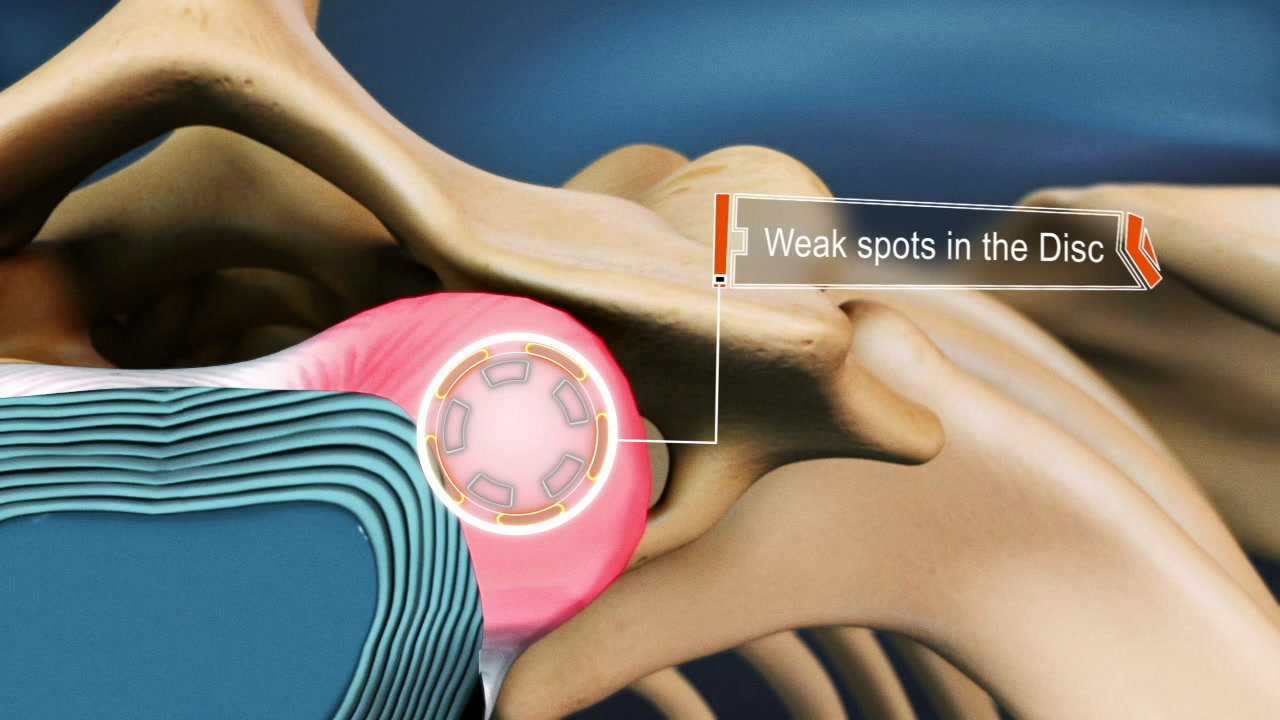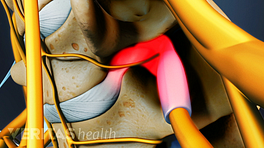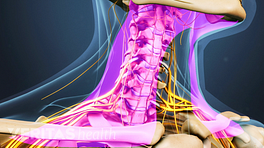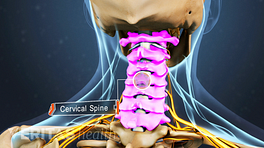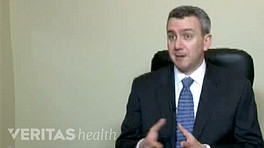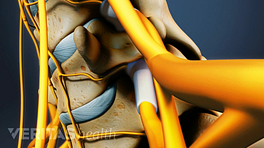A cervical herniated disc occurs when the inner portion of a disc in the cervical spine—or neck—ruptures through the outer wall of the disc.
In the cervical spine, there are six discs that lie in front of the spinal column and connect each of the 7 cervical vertebrae. Each disc is made up of a soft inner gel-like material called the nucleus pulposus that is encapsulated by a series of tough outer fibrous bands called the annulus fibrosus.
The discs provide cushioning between the vertebrae at each level, while allowing a great deal of motion in all directions.
At the back of the spine, at each level, a nerve root exits the spinal canal and travels down through the neck, shoulder, and arm, and into the hand and fingers.
When a cervical disc herniates, it can impinge on or cause inflammation near one of these cervical nerves, causing pain and other symptoms to radiate along the path of the nerve.
In the cervical spine, discs tend to herniate to the side, or laterally, causing irritation to a nerve root on one side. The two most common levels in the cervical spine to herniate are the C5-C6 level and the C6-C7 level.
Treatment for a cervical herniated disc may include nonsurgical options to manage the symptoms, or surgery to remove the herniated portion of the disc.
